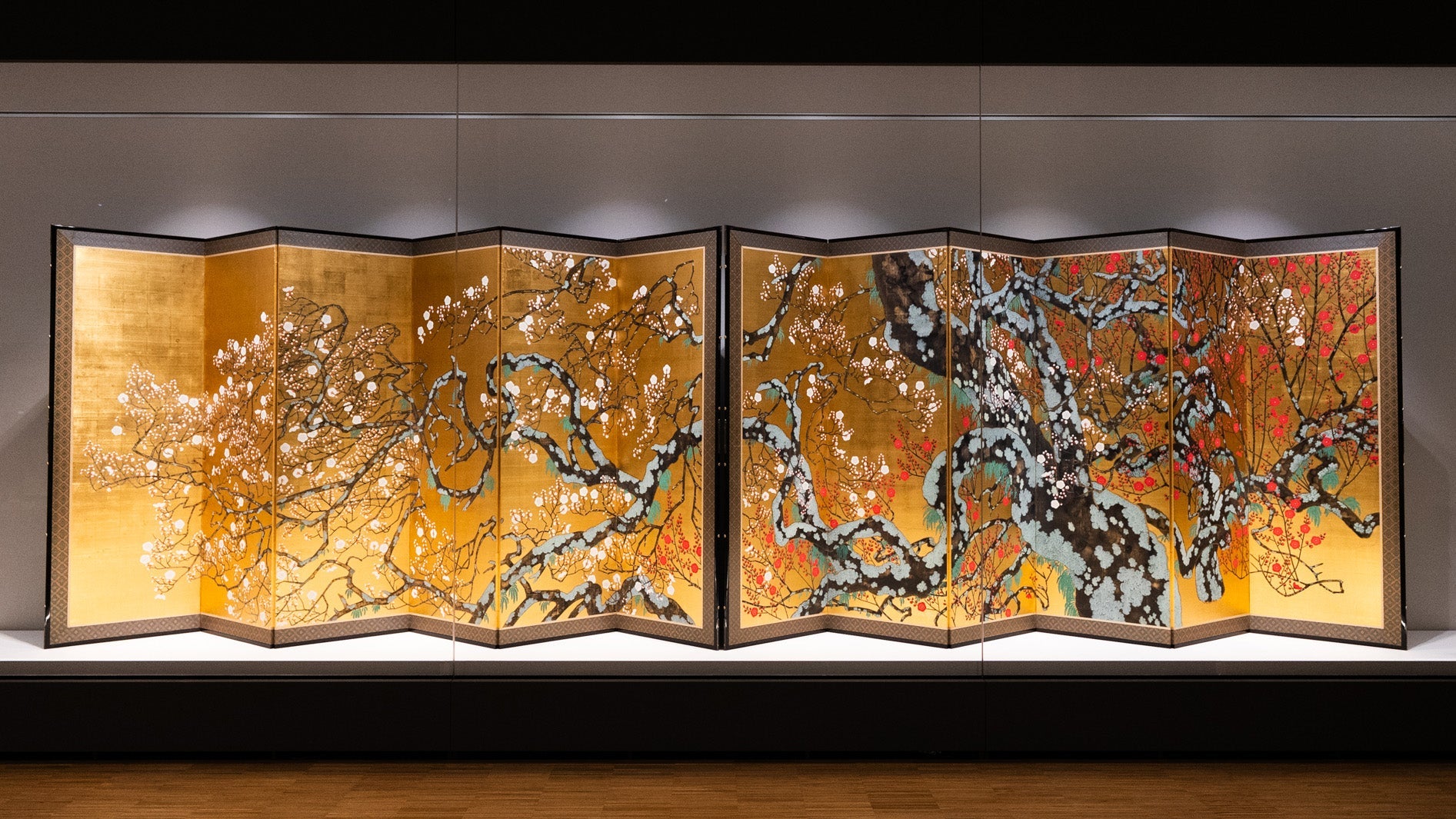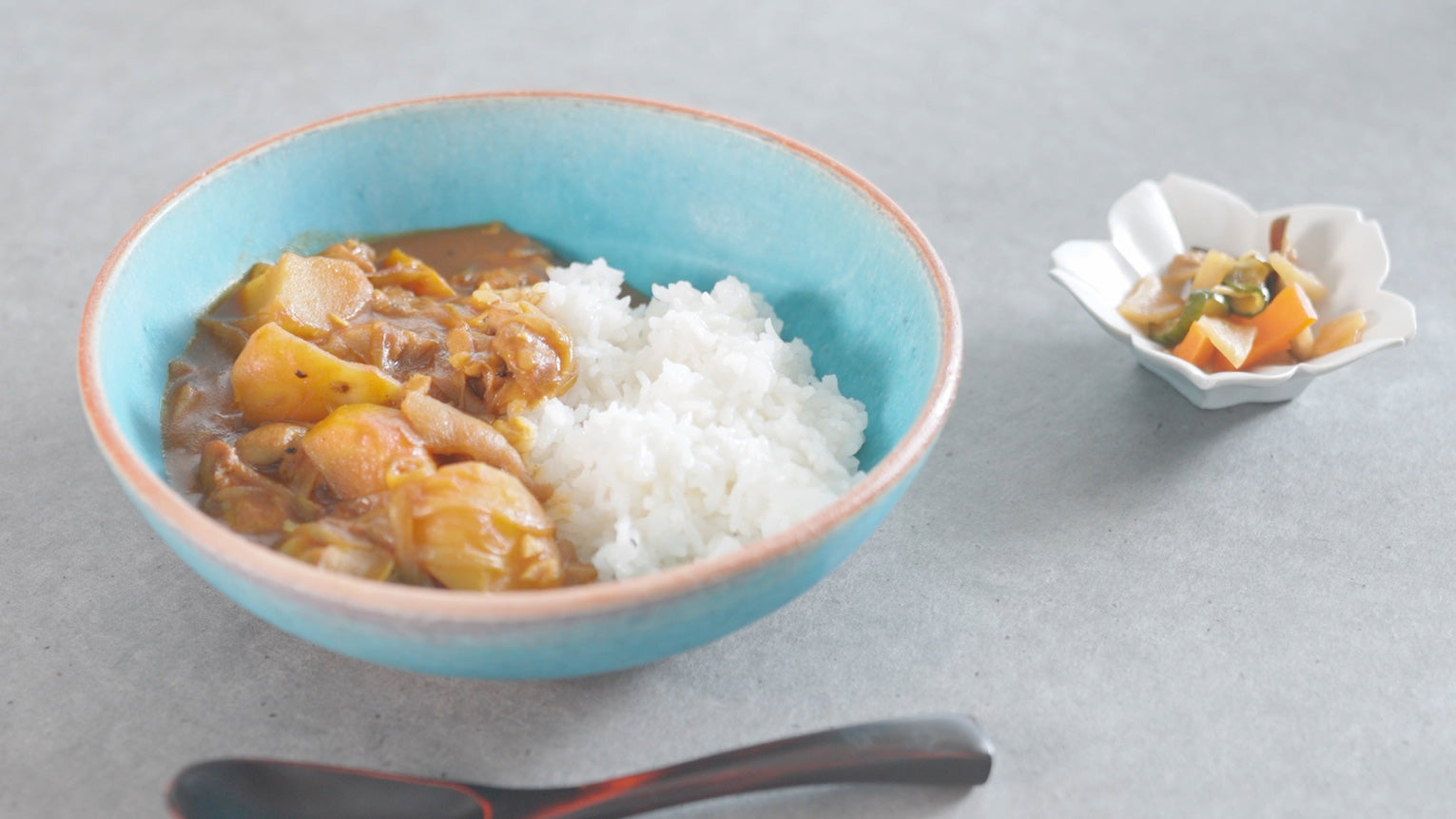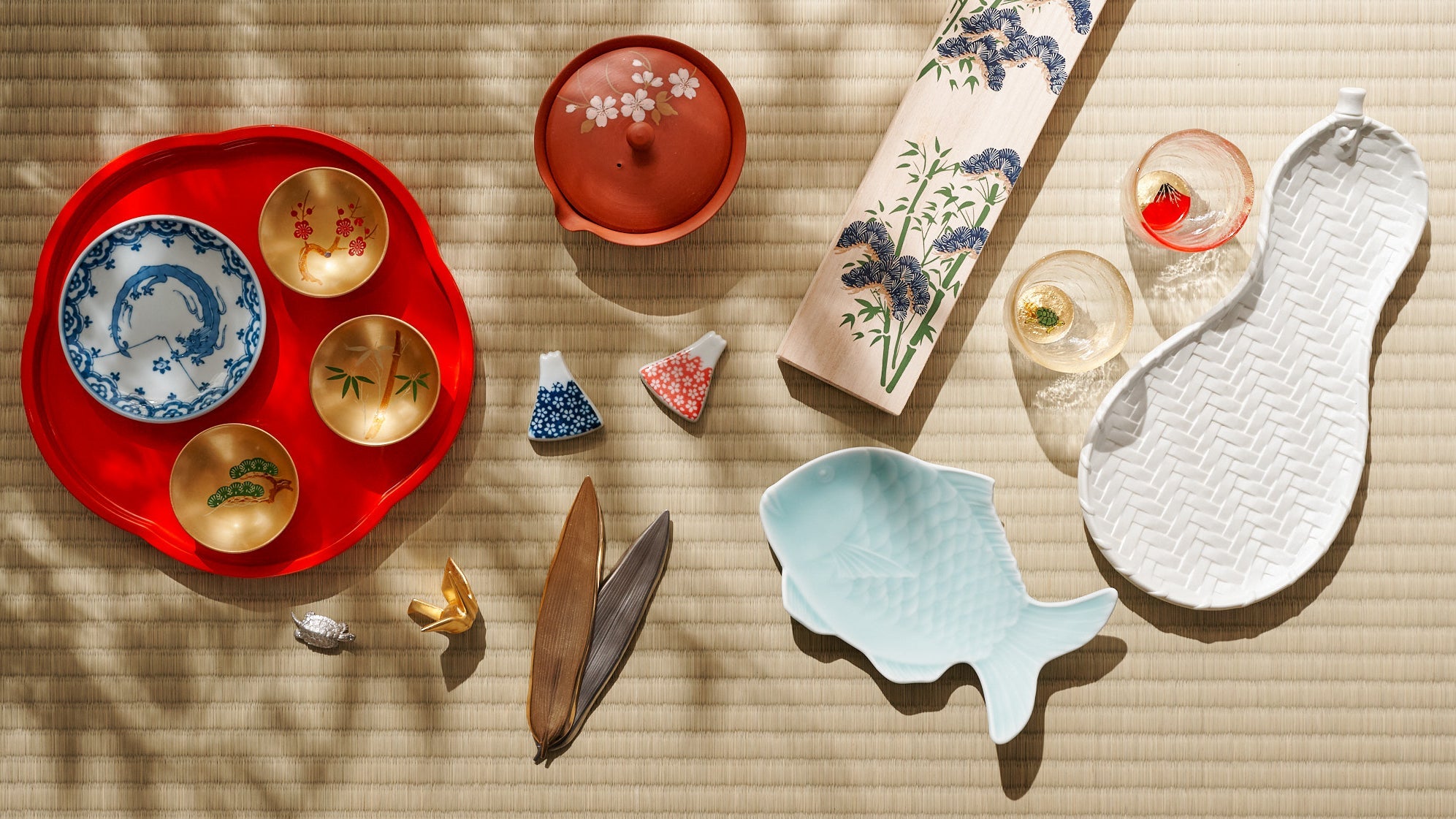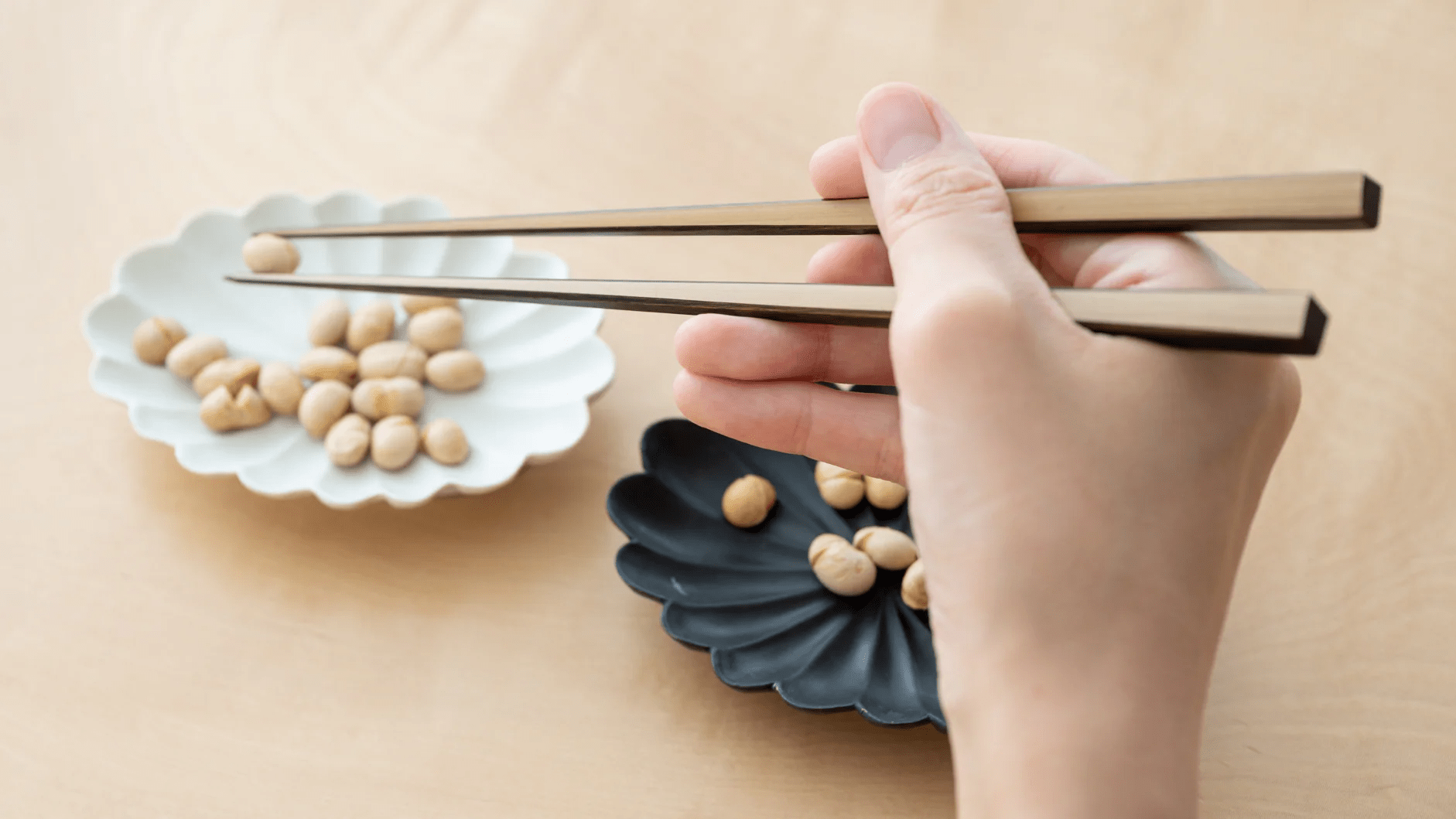
Admiring the Beauty of Floral Art at Sannomaru Shozokan
Written by Team MUSUBI
In Japan, a country that cherishes the beauty of the four seasons, flowers have long been a significant motif in art. Team Musubi recently visited Flowers: Floral Masterpieces at Sannomaru Shozokan, an exhibition hosted at The Museum of the Imperial Collections, Sannomaru Shozokan, within the Imperial Palace. The exhibition features forty-five exquisite works—ranging from painting and calligraphy to decorative arts—that span from the eleventh century to the present, all centered on the theme of flowers.
What we experienced was an entirely different way to appreciate spring: admiring blossoms depicted in masterpieces at a museum. In this article, we share this enriching experience with you.
All works in the exhibition are housed in The Museum of the Imperial Collections, Sannomaru Shozokan.
Table of contents
Captivating Artworks
Stepping into the exhibition space, we were immediately enveloped in the serene atmosphere unique to art museums. The presence of artworks connected to the Imperial Family heightened our sense of anticipation—and as an art enthusiast, I felt especially drawn to them. Although the exhibition was held in just two rooms, each piece that appeared before us was so breathtakingly beautiful that we couldn’t help but be moved.
Vase with Birds and Flowers of the Four Seasons


The first piece that stood out was a cloisonné vase adorned with seasonal flowers and birds set against a jet-black background. The varying thickness of the gold outlines created a striking sense of depth, making the cherry blossoms and maple leaves appear almost three-dimensional. The black glaze shimmered under the exhibition lights, casting an ethereal, almost otherworldly glow.
Confectionary Bowl with Cherry Blossoms

Nearby, a silver confectionary bowl subtly gleamed under the lighting. At first glance, it appeared simple, but when viewed from different angles, delicate cherry blossoms gradually emerged on its surface. This understated elegance embodied the essence of Japanese aesthetics. The meticulous metal inlay technique used in its creation revealed a level of craftsmanship that invited close, quiet admiration.
Sewing Kit and Box (Accompanying the Shelf with Cranes and Paulownia)

Further into the exhibition was an elegant sewing kit once presented to the Imperial Family. The sewing box featured intricate designs of pine, mandarin orange trees, red and white plum blossoms, and calligraphy. Remarkably, even the scissors and spools were decorated with maki-e lacquer and metal engraving. Each piece displayed extraordinary detail and refinement.
Bonbonnière with an Imperial Seal (“Ei”) on a Cherry Blossom

Bonbonnières—small lidded containers traditionally used for holding sweets—were featured in the exhibition in their role as commemorative gifts presented during Imperial celebrations. One particularly striking piece bore the Imperial seal “Ei” placed at the center of a cherry blossom. Other pieces were adorned with seasonal floral motifs such as chrysanthemums, irises, azaleas, and rhododendrons.
Floral Ornament (Kazashi)

Another stunning piece was a silver floral ornament presented during the Daikyo-no-gi banquet, held in connection with the Daijosai of the Reiwa era (2019 CE–), the once-in-a-reign ritual marking the emperor’s accession. The ornament featured delicate metal carvings of bamboo and plum blossoms, tied with a red and white mizuhiki knot that sparkled under the lights. Its exquisite craftsmanship and details held our gaze for quite some time.
Cabinet with Flowering Plants of Spring

Deeper inside the gallery stood a masterful example of Meiji era (1868–1912 CE) lacquerware: the Cabinet with Flowering Plants of Spring. Designed in the traditional two-tiered zushi style, the cabinet was decorated with vivid depictions of spring orchids, buttercups, canola blossoms, and primroses, all rendered in exquisite maki-e lacquer. The polished surface caught the light beautifully, making the flowers appear almost alive, evoking a sense of spring’s warmth.
Dinner Service with Flowering Plants of the Four Seasons

A set of twelve types of over 600 ceramic dining wares, commissioned for the Arisugawa-no-miya family, was another highlight of the exhibition. Each piece featured vividly painted seasonal flowers, with different designs on the interior and exterior—a refined and deliberate choice. Standing before the display, one could easily picture the grace and ceremony of Imperial dining in earlier times.
Red and White Plum Blossoms

Standing before this folding screen, we were captivated by the bold and dynamic depiction of red and white plum blossoms set against a gold-leaf background. The twisting, moss-covered tree trunks symbolized eternal prosperity, while the lively branches connected the red and white blossoms on either side of the screen. Observing it quietly, we felt as if time had momentarily stood still.
National Treasure Colorful Realm of Living Beings

The highlight of the exhibition was undoubtedly the National Treasure Colorful Realm of Living Beings by Ito Jakuchu. The exhibited works, Peach Blossoms and Small Birds and Peonies and Small Birds, radiated an overwhelming presence. The soft pastel hues of the peach blossoms contrasted beautifully with the bold reds and whites of the peonies, while delicate birds perched gracefully on weathered branches. The meticulous brushwork created a striking sense of depth, as if the world within each panel were gently stirring to life.
About Sannomaru Shozokan

Sannomaru Shozokan is a museum dedicated to showcasing artworks and crafts collected by the Japanese Imperial Family over the centuries. The space is thoughtfully designed to highlight each piece’s beauty through carefully curated lighting and display techniques.
Located within the East Gardens of the Imperial Palace, the museum is surrounded by carefully maintained grounds, offering a quiet retreat from Tokyo’s bustling business district. On the day of our visit, foreign visitors outnumbered locals, strolling leisurely through the gardens and taking in the atmosphere of Japanese culture.
The museum will temporarily close following this exhibition due to ongoing construction of a new facility, with reopening scheduled for fall 2026. As such, this exhibition offers a final opportunity to view these remarkable works in their current setting. For those wishing to experience the beauty of flowers in Japanese art, now is the ideal time to visit.
The exhibition runs until May 6 (Tuesday, national holiday), 2025, and is divided into two terms: March 11 to April 6, and April 8 to May 6. Some works are shown only during the first term, so please check the museum’s official website for details before your visit.
The Flowers: Floral Masterpieces at Sannomaru Shozokan exhibition offers a rare opportunity to explore how flowers have been depicted in Japanese art throughout history. Through paintings, lacquerware, and various crafted pieces, visitors can experience the changing seasons and the refined aesthetic sensibilities of Japan.
Spring in Japan is often associated with cherry blossoms and plum blossoms, but this exhibition allowed us to appreciate them in a different way—through the quiet ambiance of a museum. Whether it was peonies on a folding screen, delicate spring grasses in maki-e lacquer, or seasonal flowers on a cloisonné vase, each work conveyed a unique beauty that warmed the heart. Spending time in such a serene space, immersed in the splendor of floral art, was truly a luxurious experience. If you have the chance, we highly recommend visiting this exhibition and embracing the timeless charm of flowers in Japanese art.
The Museum of the Imperial Collections, Sannomaru Shozokan
1-8 Chiyoda, Chiyoda-ku, Tokyo
Inside the East Gardens of the Imperial Palace








Leave a comment
This site is protected by hCaptcha and the hCaptcha Privacy Policy and Terms of Service apply.